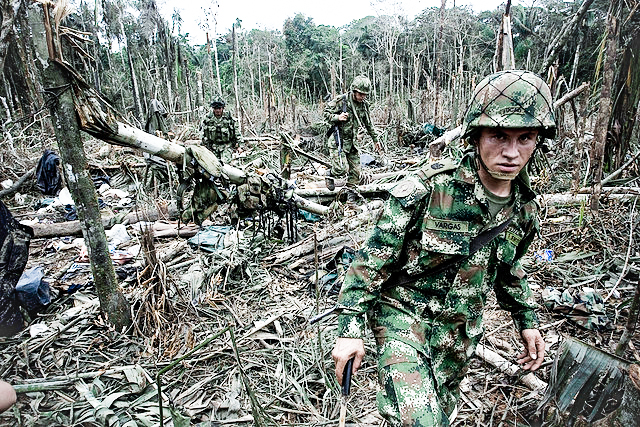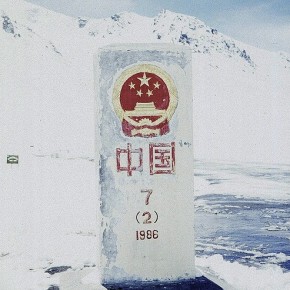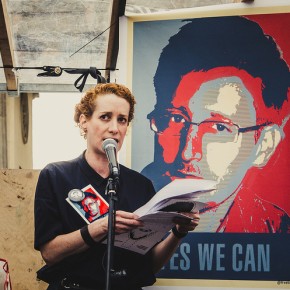A peace process that could finally end a conflict that has lasted for over 50 years resumed yesterday with the release of Colombian Brigadier General Rubén Darío Alzate Mora. The negotiations, between the government and the FARC communist insurgency, began in September 4th of 2012, after secret negotiations produced a preliminary agreement focusing on five points: rural development; guarantees for the exercise of political opposition and citizen participation; the end of the armed conflict; drug trafficking; and victims’ rights.
The announcement by President Santos of the Party of National Unity (Partido de Unidad Nacional) came as a surprise to many as he had served as Defense Minister in the previous administration of President Álvaro Uribe Vélez, hitting the guerrillas heavily and expanding the reach of the armed forces in Colombia’s challenging rural terrain. The peace process, although celebrated by many, was not without its critics, who were opposed to negotiating with a group widely recognized as a terrorist and drug-trafficking organization. Among the fiercest was former President Uribe, who had himself conducted a problematic and controversial peace process with a right-wing terrorist group, called the AUC. Tensions continued to rise between the former allies Santos and Uribe, peaking with events such as Uribe’s decision in April, 2013 to leak the coordinates of the area where military operations were to be lifted in order for guerrilla commanders to travel to Cuba for the commencement of formal peace talks.
In the political dispute that followed, Uribe called Santos a traitor and accused him of providing the FARC with immunity and allowing them to murder soldiers and cops. The dispute would have important political consequences for the country, with parliamentarians and other political figures of what was then a united camp torn between between the two symbolic figures: the current president Santos, a cosmopolitan heir to one of Colombia’s wealthiest and oldest families and former owners of the biggest newspaper in the country and former president Uribe, son of a murdered rancher from Antioquia, often photographed drinking coffee while riding his horse, or engaging in other traditional rural activities, but whose fortune and political influence has often, but with no juridical consequences so far, been linked to paramilitary terrorists.
In any case, this division amid the countries’ elites is relatively small compared to the massive disagreement between the Right and the Left about what exactly led Colombia into this situation in the first place. When asked about the recent past and the failure of previous negotiations, the someone on the Right is likely to remember the disaster of the Demilitarized Zoned during the conversations held by the conservative government of Andrés Pastrana, interpreting this time as one where a well-educated Bogotá man was too lenient with the FARC and allowed them to have a secure base from which to take hostages and strengthen their ideological and military capabilities. Conversely, a person who identifies with the Left might recall the way in which the government was complicit in a systematic plan to eliminate not only extremists like FARC, but anyone that could even remotely be accused of facilitating, justifying, or aiding the communist cause, a process that lead to the death of some of the country’s most celebrated minds, as well as around 4000 members of the Patriotic Union and the Communist Party and also drove the nation’s most famous cultural figure, Gabriel Garcia Márquez, into a decades-long exile.

The peace process taking place in Havana was thrown into crisis after the capture of several people in the rural department of Chocó including Brigadier General Mora, who had been traveling under unclear circumstances, in civilian clothing and without proper security, in a heavily disputed area. President Santos eventually decided to suspend the dialogues after several months of pressure from the right wing Centro Democrático Party and other influential sectors of the opposition. In the middle of this high drama acted out in the media, public conversation radically shifted from where it was just a couple of weeks ago. For example, in a speech given during the unveiling of 550 free houses Ibagüé, Tolima, president Santos warned the FARC to accelerate talks lest they run “into the same fate” as as slain commander Alfonso Cano. This threatening tone had been normal for the first months of the peace process, during which both government officials and the media reveled in the perceived power to kill guerrilla commanders from the air if they were ever caught off guard. At every opportunity, both president Santos and his Defense Minister, Juan Carlos Pinzón, had emphasized that the conflict was to continue with full force and with the permanent order to kill or capture any insurgent they could, adding that the guerrillas were only negotiating because they were defeated militarily.
On November 17, however, the president of Colombia canceled the peace talks after the capture of Brigadier General Mora, one of his own commanders. The scandal escalated to the point that President Santos himself publicly demanded explanations for Mora’s risk-taking behavior, causing a rift in the administration’s own ranks with implications impossible to predict. In response, military officials insisted that “the only ones responsible for kidnapping are those responsible for the crime, and they are the only ones accountable for having committed the crime; they are the ones who endanger the freedom and life of citizens,” denying any wrongdoing on their behalf and shifting the focus of the nation onto the FARC themselves. This position stands in stark contrast to the military’s own reluctance to investigate and prosecute kidnappings, torture, and extra-judicial executions committed by their own troops. Refusing to determine responsibility for these crimes, which totaled more than 3000 just in the scandal of the so-called “False Positives” — innocent civilians murdered by paramilitary groups merely to boost their body counts — President Santos’s Defense Minister “is steadfastly pressing for several bills that would virtually guarantee impunity by sending the cases to military courts” instead of permitting civil legal proceedings
This situation has only worsened the rift in perception concerning both the peace process and the conflict itself, with public opinion dividing into predictable camps. For the Left, it is the intransigency of the ruling class, the fluidity of its relations with a parallel drug-trafficking bourgeoisie, and its unwillingness to stop funding groups that massacre the opposition that fuel the tensions. For the Right, it is the fact that FARC has demanded a bilateral cease-fire instead of unconditionally surrendering to the military, coupled a defensive attitude that portrays the significant minority that seems to find this course of action reasonable as either collaborators, or cowards. As for the victims, their cries for a permanent bilateral cease-fire continue to be ignored by the center-right government and the right-wing opposition. Even as the crisis wanes, the deployment of its memory as an ideological tool will continue to be used, paradoxically, by both proponents and opponents of a bilateral cease-fire.
Even half a century after the two oldest guerillas in the world, the FARC and the ELN were founded, the atrocities and horror of war have not persuaded people in power that we must create an egalitarian space where the reasons for the conflict can be ascertained and addressed so that we may achieve truth, justice, and reparations for all its victims. Today, as always, we must ask the international community to pressure our elites in the hope that the longest conflict in the world will finally move decisively from military action to political negotiation.
Photographs courtesy of Mauricio Moreno and Global Panorama. Published under a Creative Commons License.




1 comment